A 200-2700 MHz 2-Arm Conical Spiral Antenna
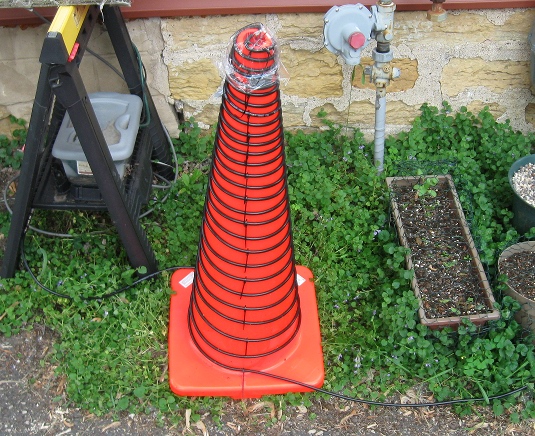
Like a planar archimedean spiral the goal for a conical archmedean spiral is to cover a large frequency range with circular polarization. The conical 2-arm archmedean spiral is slightly more directional than the planar but even it has a fairly wide beam that's almost hemispherical.
I place it on the ground (like left) when actually in operation or on a bed when testing with a vector network analyzer. The VNA assumes that any loss in power in the reflection coming back from the antenna (s11) is radiated. But it may be at higher frequencies the loss in long coax of the infinite balun contributes to the power lost and the actual match may be worse. But since the s11 (return loss) peaks are -5dB down all across the frequency range I think it's safe to assume coax loses in the infinite balun can be ignored (<1dB). The discontinuous rise at 2.7 GHz is instrumental.
A similar size tapered slot (vivaldi) easiy achieves -10 dB return loss over the same frequency range with much less tedious construction. But if you need circular polarization for some reason I guess there's this.
This zoomable spectrogram shows 41 hours vertically and 116 to 965 MHz horizontally. It's a direct comparison between this conical spiral antenna and my normal discone. The switch is made for the bottom 1/5 of the plot at 20:30 UTC and goes till the end at 05:00 UTC. You can see the decreased local RFI in VHF due to it's directionality (changed it's point to straight up at 22:00 UTC) and increased signal over much of the upper VHF->UHF range.
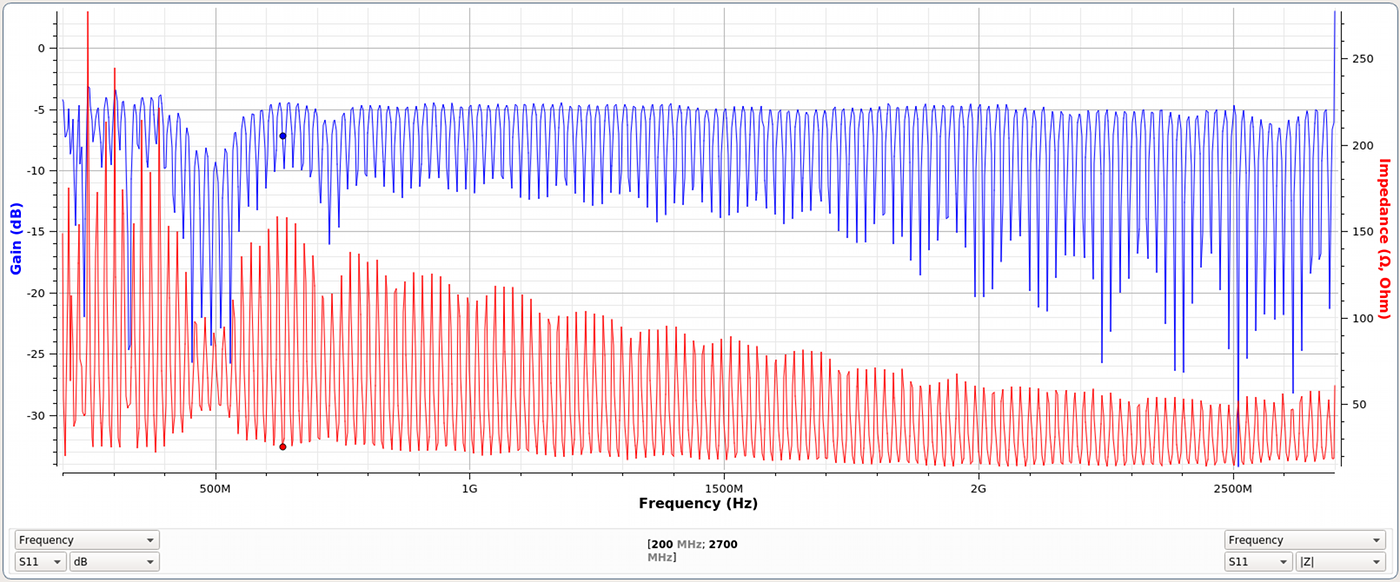
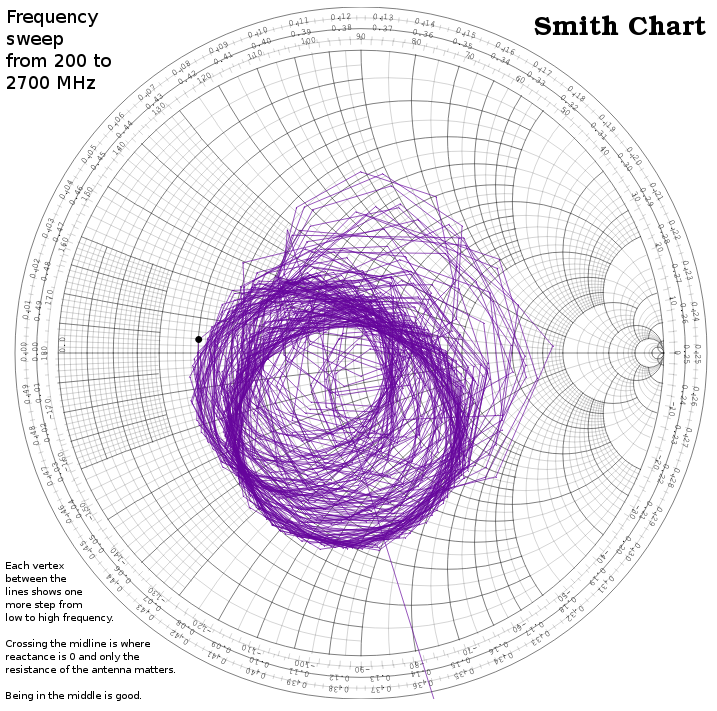
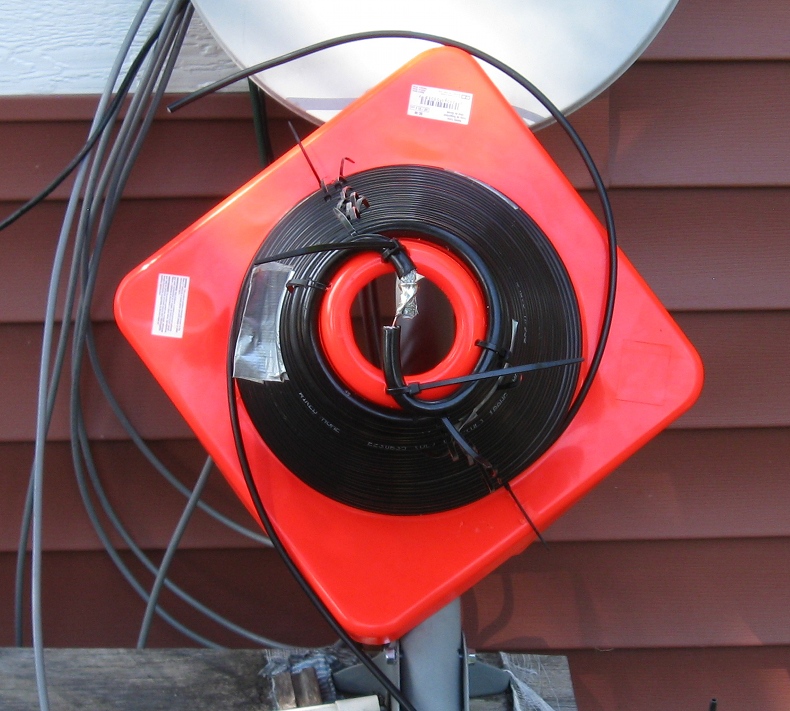
Self-complementary structures
A 2-arm conical spiral antenna is, optimally, self-complementary over the entire aperture. The conductor and dielectric gaps can be rotated or mirrored such that they both have the same shape and each cover 50% of the area. If this "Mushiake Principle" is fulfilled then the impedance will be 50% of the free space impedance or, Z0/2 = 188 Ohms. This property gives them a very wide effective impedance bandwidth. If a ratio other than 50/50 gap/conductor is maintained then the actual impedance will oscillate versus frequency around a value close by.
"We can make a structure with logarithmically scaled radiating parts along a transmission line and still not achieve a successful broadband antenna. The parts must couple electromagnetically, not just through the connection of the feeder. We place dipoles of the log-periodic dipole antenna close together to produce the coupling needed for rapid attenuation. Similarly, we closely space the turns of a spiral so that the arms couple and there is sufficient length in the active region along which to radiate. Usually, we can account for the rapid attenuation of currents through loss of power in radiation by considering a single mode."
-- Modern Antenna Design by Thomas A Milligan, 2005, p.541
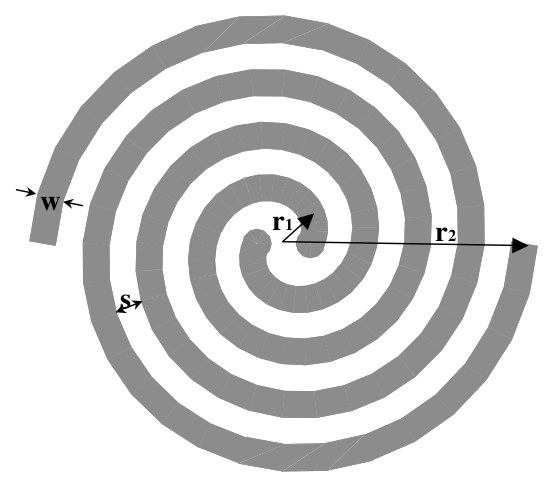
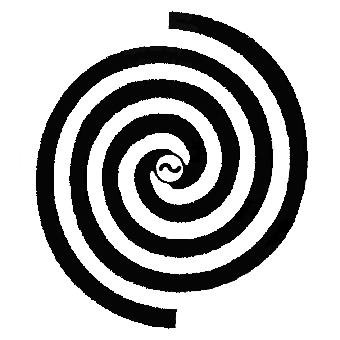
Arm width versus inner radius
Archimedean spirals aren't fully self similar since they are not scale invariant but apparently they behave a lot like equiangular spiral antenna. To be self-complementary the area of metal conductor and air (dielectric) should be equal; able to be switched with no change in the antenna's structure. For an archimedean spiral this means the width of the spiral arm, w, should be the width of the gap between arms, s. Additionally, the inner radius, r_1, should be equal to both. If it is not, the impedance varies greatly by frequency. This is true in my conical spiral antenna and you can see how the impedance rapidly oscillates around an average value.
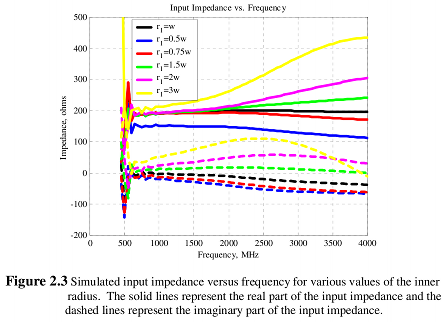
"When the inner radius is less than the arm width the real part of the input impedance is less than the desired 188 ohms, and when the inner radius is greater than the arm width the real part of the input impedance is greater than expected. Also, when the inner radius is not equal to the arm width, both the real and imaginary parts of the input impedance vary greatly with frequency."
-- Analysis of Archimedean Spiral Antenna, p.4
Construction
Mark out the positions for one arm along an arbitrary side. Wind and tack the coax into rough position with temporary duct tape. Once roughly in position drill 2 holes, above and below each pass of the coax, by the position mark. For each hole pre-bend the tip of a small zip tie into a small half circle and thread it through the bottom hole and out the top. This clamps down over the coax to hold it in place. Don't fully tighten any zip ties until the 2nd arm marked and attached the same way.
Getting the zip ties about 1/4 down from the top is very hard since you cannot reach from the top and have to do it blind if you stick in your arm from the bottom. Put a second zip tie sticking in through the top hole. Feel around for this one when bending the bottom zip tie and use it as a touch guide to find the hole.
Exact positioning doesn't matter so much as maintaining consisting (or at least smoothly varied) spacing from turn to turn.
I left the last turn on each arm pretty long so I could try out different tapered resistance terminations with coax to spare. Even left flailing out like this it performs pretty well on the low end
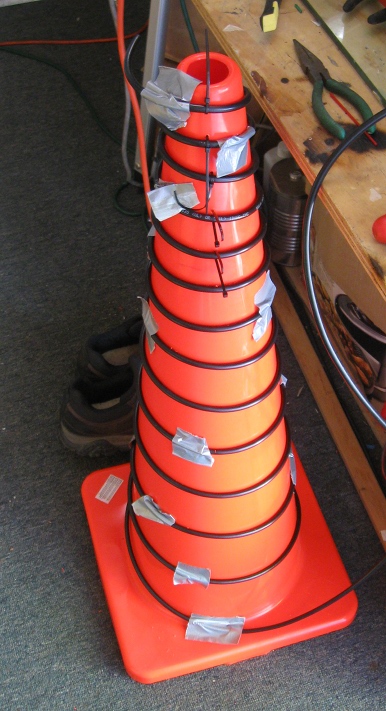
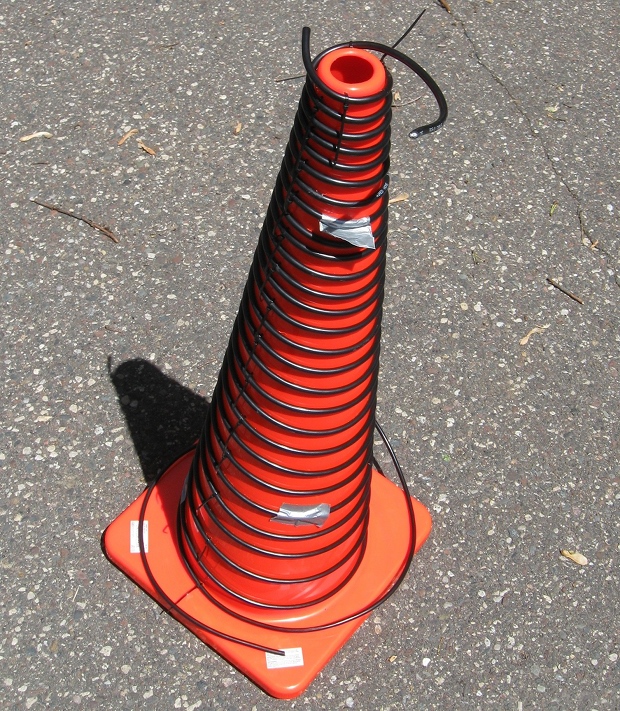
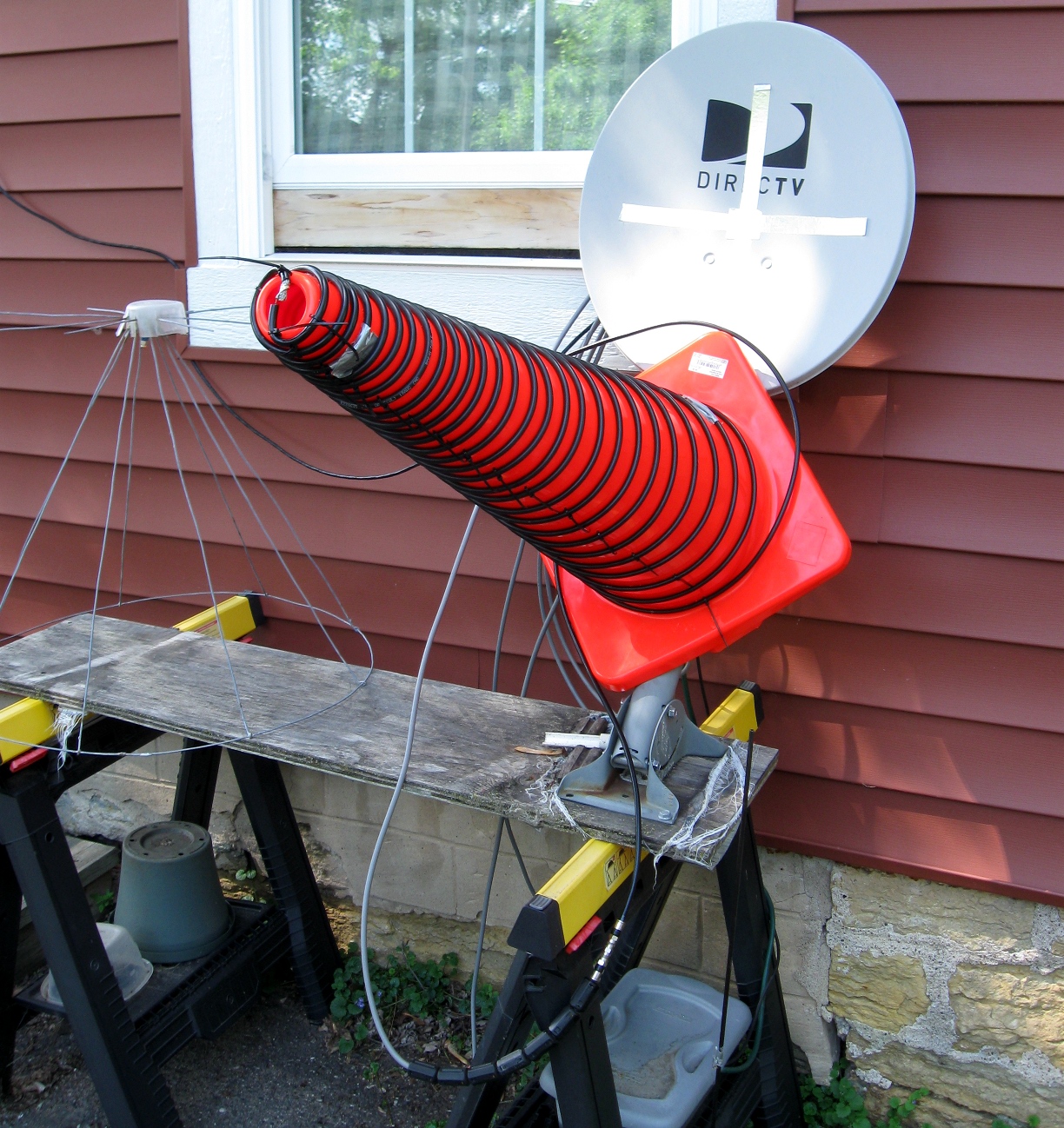
[comment on this post] Append "/@say/your message here" to the URL in the location bar and hit enter.


